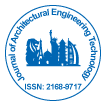Renewable Energy Integration in Architecture: A Sustainable Future
Received Date: Mar 01, 2025 / Accepted Date: Mar 31, 2025 / Published Date: Mar 31, 2025
Abstract
The integration of renewable energy systems in architecture represents a critical intersection between sustainable design practices and the urgent global need to transition away from fossil fuels. As buildings account for approximately 40% of global energy consumption and contribute significantly to greenhouse gas emissions, reimagining their design through the lens of energy autonomy and environmental stewardship is paramount. This paper explores the multifaceted dimensions of embedding renewable energy technologies—such as solar photovoltaics, wind turbines, geothermal systems, and building-integrated energy storage—into architectural design. It assesses the technical, aesthetic, economic, and regulatory challenges and opportunities associated with these integrations. Drawing on international case studies, design innovations, and performance evaluations, the study illustrates how architecture can evolve beyond passive energy efficiency into active energy generation, contributing positively to the urban energy grid. Special attention is given to the role of net-zero energy buildings (NZEBs), bioclimatic design principles, and emerging materials that facilitate the seamless inclusion of renewables without compromising architectural integrity. Furthermore, the paper critiques the current policy landscape and advocates for an integrated planning approach involving architects, engineers, policymakers, and communities. The findings underscore that renewable energy integration is not merely an add-on but a transformative force capable of reshaping the built environment into a resilient, low-carbon, and livable future.
Citation: Ayesha V (2025) Renewable Energy Integration in Architecture: ASustainable Future. J Archit Eng Tech 14: 440.
Copyright: © 2025 Ayesha V. This is an open-access article distributed under theterms of the Creative Commons Attribution License, which permits unrestricteduse, distribution, and reproduction in any medium, provided the original author andsource are credited.
Select your language of interest to view the total content in your interested language
Share This Article
Recommended Journals
Open Access Journals
Article Usage
- Total views: 525
- [From(publication date): 0-0 - Dec 12, 2025]
- Breakdown by view type
- HTML page views: 445
- PDF downloads: 80
